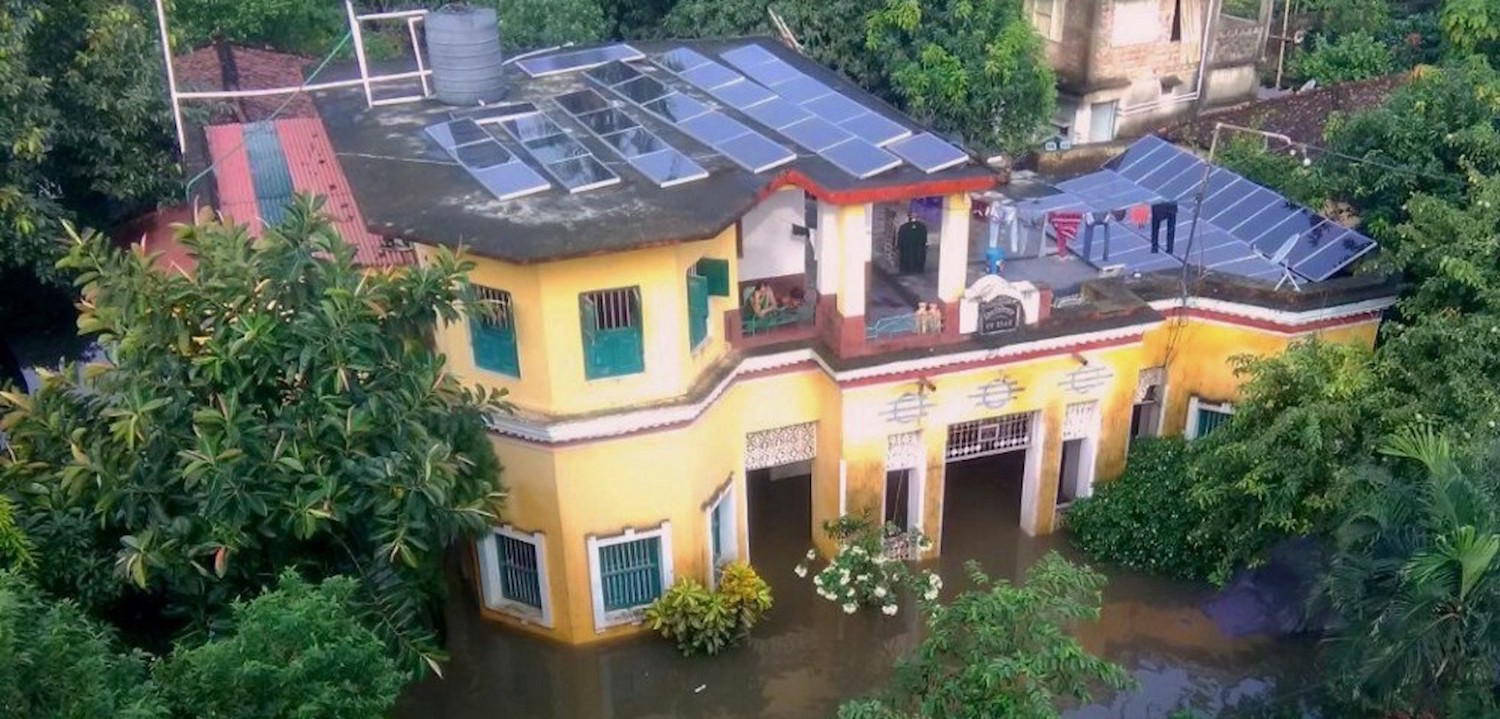The Environmental Protection Agency has hired contractors to repair fencing around a federally designated, hazardous waste site and “local security is stationed at the wells to prevent access,” the agency said, after reports surfaced that residents — desperate for drinking water — were taking water from a toxic well.
Puerto Rico’s water utility, Autoridad de Acueductos y Alcantarillados, had been distributing water from a well at the Dorado Groundwater Contamination Site, which was added in 2016 to the federal Superfund program for hazardous waste cleanup. The utility was reportedly unaware that the site was contaminated until CNN contacted it with Superfund maps. Superfund sites are highly contaminated toxic sites targeted by the federal government for cleanup because of risks to human health and the environment.
A water truck and bottled water have been stationed in the western Dorado well area to provide water to residents, the EPA said in an email to ThinkProgress.
But almost a month after Hurricane Maria struck the island, more than 35 percent of the island’s residents still lack access to safe drinking water.
Meanwhile, raw sewage is pouring into the rivers and reservoirs of Puerto Rico in the continued aftermath of the hurricane, which struck the island in September. People without running water are bathing and washing their clothes in contaminated streams, CBS News reported Tuesday. “This will be the most challenging environmental response after a hurricane that our country has ever seen,” Judith Enck, who served as administrator of the EPA’s region 2 — which includes Puerto Rico — under President Barack Obama, told the television network.
“It’s been nearly one month since Hurricane Maria hit Puerto Rico, and yesterday, official numbers on drinking water access inexplicably declined from 72 percent to 65 percent,” Food & Water Watch executive director Wenonah Hauter said in a statement Wednesday. “The number has crept up to only 69 percent today, when we should be seeing much more significant progress. Anyone who does not have tap water available should be provided with access to clean drinking water.”
Hauter called on the U.S. government to rebuild Puerto Rico’s food, water, and energy systems to better withstand future disasters. Food & Water Watch is a nonprofit environmental group based in Washington, D.C.
The restoration of power in Puerto Rico also is not going as smoothly as on the mainland after a hurricane strikes — far from it. After most hurricanes, power restoration typically climbs quickly in the early days after the storm knocks out power, and then evens out as electric utilities get close to 100 percent restoration. In the first few weeks since Maria hit Puerto Rico, power restoration has been uneven, with a promising upward trend followed by a dramatic drop-off in the number of residents with power a week later.
Puerto Rico has a total of 18 Superfund sites, including the former U.S. Navy bombing range on the island of Vieques. Removal sites require immediate, short-term responses to protect people from immediate threats posed by hazardous waste sites but have not been designed as Superfund sites. The EPA said late Tuesday it has successfully assessed a total of 28 Superfund sites or removal sites in Puerto Rico.
A month after Maria, 82% of Americans in Puerto Rico have no power, 35% no water.
And you’re still tweeting attacks at football players. https://t.co/Xoh47aEoHp
— Rep. Don Beyer (@RepDonBeyer) October 18, 2017
Lawmakers are perplexed by President Donald Trump’s inability to focus on helping the people of Puerto Rico gain access to safe drinking water as soon as possible. In a tweet on Wednesday, Rep. Don Beyer (D-VA) noted, “a month after Maria, 82 percent of Americans in Puerto Rico have no power, 35 percent no water. And you’re still tweeting attacks at football players.”
As of Tuesday, the EPA had 116 staff and contractors in Puerto Rico to work on hurricane recovery efforts, the agency said. The EPA has not been forced to transfer any staff from Texas, where Hurricane Harvey caused record flooding along the coast, to assist with its recovery efforts in Puerto Rico. The EPA has adequate staffing in Texas to continue clean-up efforts and assess potential contamination caused by the flooding in Texas, the agency said.
In the aftermath of Hurricane Harvey, the EPA said that aerial imagery showed 13 of the 41 designated Superfund sites in the Houston area were flooded by Harvey and were “experiencing possible damage” due to the storm.
All 43 Superfund sites in the hurricane-affected area of Texas have now been assessed. Of these, 42 sites have been cleared. The San Jacinto River Waste Pits site, which feeds into the Houston Ship Channel, still requires additional assessments and clean-up, the EPA said last Friday. The agency has approved a plan to permanently remove tons of toxics from the waste pits, which began to leak cancer-causing dioxin into the San Jacinto River after Hurricane Harvey.


